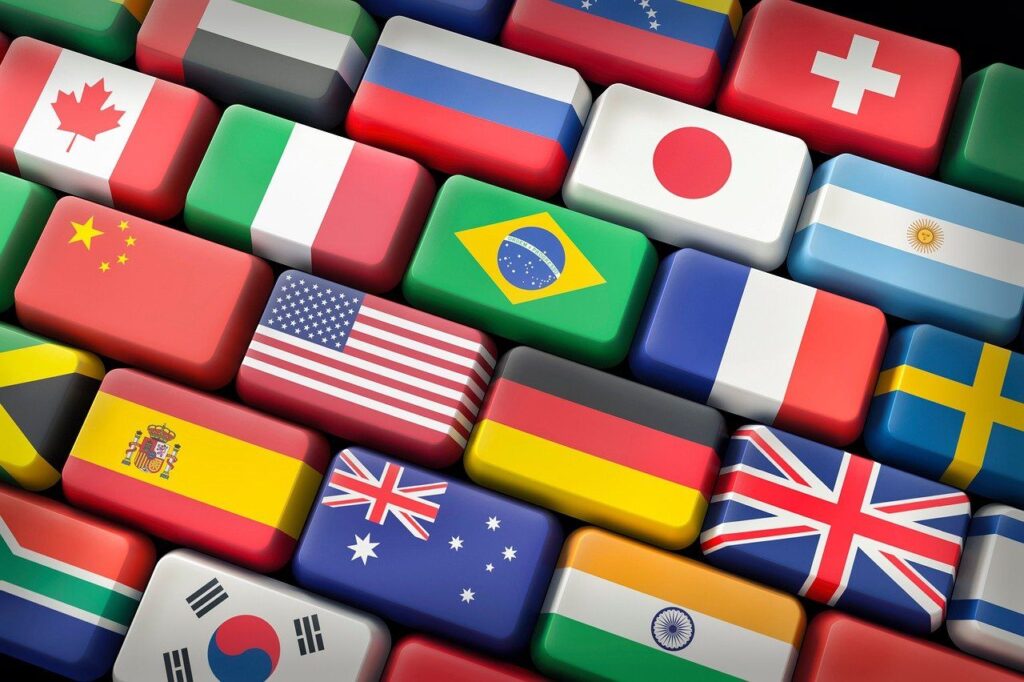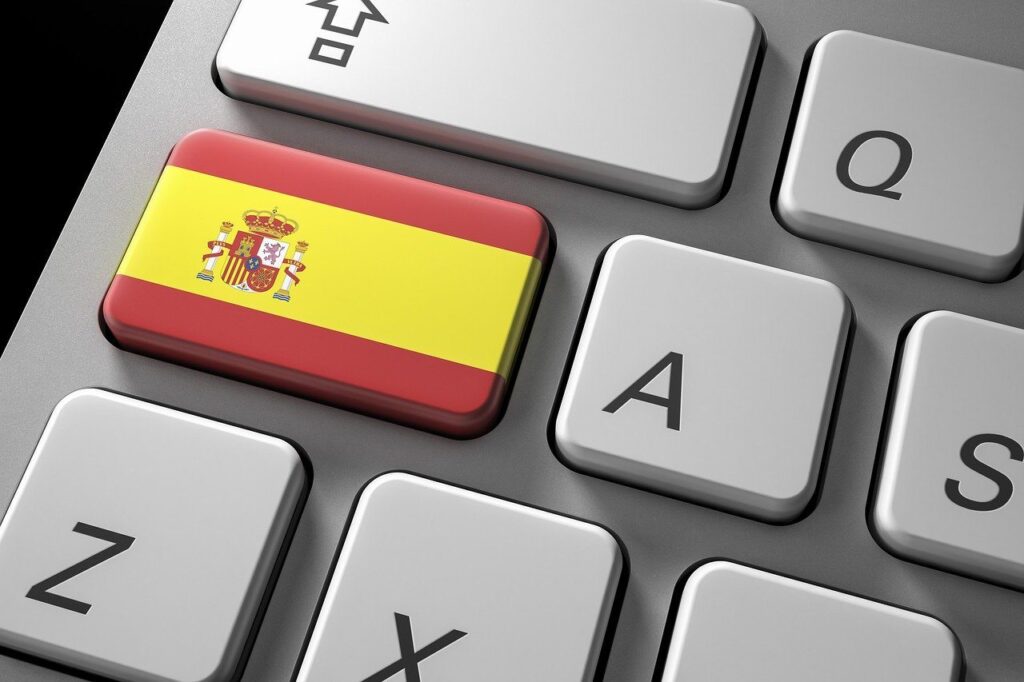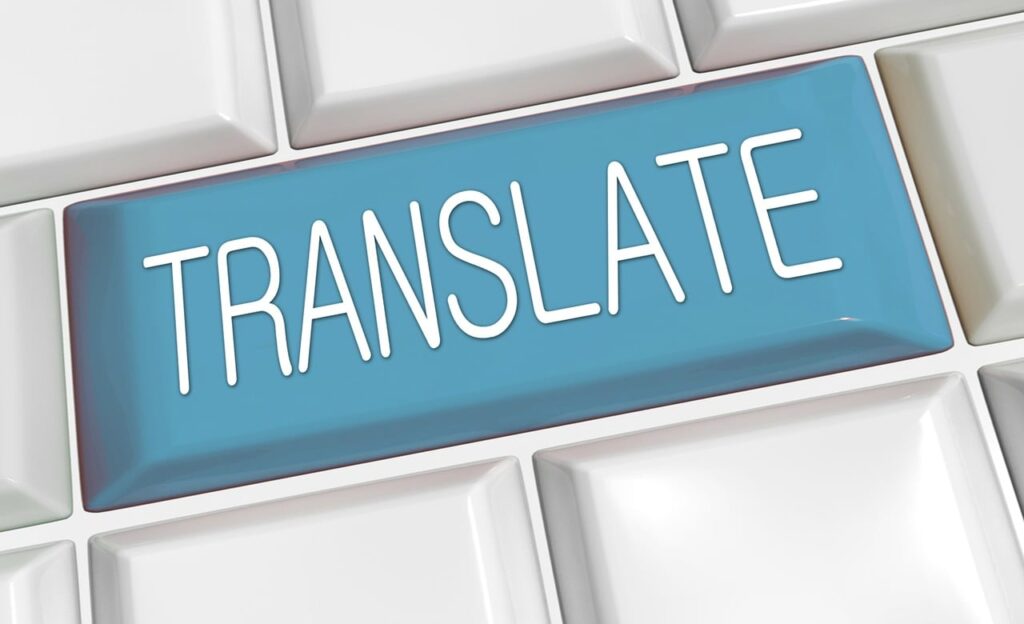Multilingual Video: A Game-Changer for Content Creators Expanding Globally
Introduction:
A multilingual video is any video content that includes multiple languages to cater to diverse audiences, typically through subtitles, voiceovers, or fully localized versions. Whether it’s a YouTube tutorial, an Instagram reel, or a vlog, adding multilingual elements helps creators break through language barriers and make their content accessible to a broader audience. In today’s globalized world, where digital platforms enable creators to reach people from all corners of the globe, multilingual video is becoming an essential tool for content creators to stay competitive.
The demand for global content is at an all-time high. As more people consume content online, platforms like YouTube, TikTok, and Instagram are witnessing significant growth in non-English-speaking markets. According to recent data, over 75% of the world’s internet users speak a language other than English, meaning that creators who only produce content in one language are missing out on a vast pool of potential viewers. By incorporating multiple languages into videos, creators can tap into international audiences, build a diverse fan base, and increase their content’s visibility across regions.
For content creators, the benefits of producing multilingual videos are substantial. Not only does it open doors to new markets, but it also fosters deeper engagement. When viewers can watch content in their native language, they are more likely to interact with it, share it with others, and remain loyal followers. Furthermore, creating videos in multiple languages helps to enhance your personal brand as a creator who values inclusivity and understands the importance of connecting with global audiences. In a crowded digital landscape, this can set you apart and give you a competitive edge.
Why Multilingual Video is Essential for Content Creators
Expanding Your Audience
Creating multilingual video content allows content creators to attract viewers from non-English speaking countries, significantly broadening their subscriber base and follower count. With billions of people online, many of whom do not speak English as their first language, producing content in multiple languages opens up opportunities to connect with audiences worldwide. By providing subtitles or dubbing in languages like Spanish, Mandarin, or Hindi, content creators can increase their reach, growing their viewership across diverse regions. This expansion can lead to a steady increase in subscribers, giving creators more influence and visibility in international markets.
Increased Engagement
Viewers are far more likely to engage with content that speaks to them in their native language. Multilingual videos resonate more with non-English speakers, as they feel more understood and valued when the content addresses them directly. This connection can lead to higher engagement rates in the form of likes, shares, and comments, as well as longer watch times. A video that includes subtitles or is dubbed in a viewer’s native language not only makes the content more accessible but also invites the audience to interact more deeply. Higher engagement ultimately boosts the creator’s rankings on platforms like YouTube and Instagram, where engagement is a critical factor in content visibility and promotion.
Monetization Opportunities
Producing multilingual content also opens the door to new monetization opportunities. On platforms like YouTube, creators can benefit from diverse advertising markets by reaching international audiences. Many advertisers cater specifically to non-English-speaking regions, and by creating multilingual content, you can tap into this revenue stream. Additionally, some countries offer higher CPM (cost per mille) rates, meaning that views from these regions can generate more income for creators. The more languages you incorporate into your content, the more likely you are to attract advertisers from different regions, thereby increasing your chances for higher ad revenue.
Personal Brand Growth
Multilingual video content can also elevate a creator’s personal brand by positioning them as inclusive and international. In today’s digital world, being seen as a global content creator can significantly enhance your reputation. Audiences appreciate creators who make the extra effort to communicate with people from different cultures and languages, and this effort can help build trust and loyalty. By crossing language barriers, creators can establish themselves as forward-thinking, diverse, and inclusive, qualities that can make their brand stand out in an increasingly crowded content landscape. Furthermore, offering multilingual content demonstrates a creator’s adaptability and openness to new markets, which can attract sponsorships and collaborations with international brands.
Key Strategies for Multilingual Video Creation
Subtitles and Captions
Adding subtitles and captions in different languages is one of the simplest yet most effective ways to make your content accessible to a global audience. Subtitles allow non-native speakers to engage with your video without language barriers, ensuring that your message reaches a wider audience. Moreover, captions are crucial for viewers who are deaf or hard of hearing, making your content more inclusive.
Platforms like YouTube offer auto-captioning features that automatically generate subtitles in multiple languages, providing an easy starting point for creators. While these tools are useful, they often have limitations, especially with complex or idiomatic phrases. To maintain accuracy, creators can turn to professional subtitle services like Rev or Subtitle Horse, which offer more reliable translations and formatting. Adding high-quality, well-timed subtitles not only improves viewer experience but also boosts engagement metrics, as people are more likely to watch a video when they can easily follow along in their own language.
Voiceovers and Dubbing
For creators aiming to provide a more immersive experience, voiceovers and dubbing are powerful tools. While subtitles work well for certain types of content, some audiences prefer to listen to the content in their native language, especially when watching long-form videos or narrative-driven content. Voiceovers can help capture attention and convey tone, humor, and emotion more effectively than text alone.
Native voice actors are ideal for achieving a professional, authentic feel. They can bring cultural nuances to the performance, making the content more relatable to the target audience. For creators working with tighter budgets or producing a high volume of content, AI-driven dubbing tools, such as Descript or Papercup, can provide a more cost-effective solution. These tools use AI to generate voiceovers in different languages with fairly accurate results, helping creators localize content without having to hire multiple voice actors.
The decision to use voiceovers or dubbing depends on the nature of the content and the creator’s goals. For example, educational videos or tutorials may benefit from subtitling alone, while entertainment content, such as films or web series, might require dubbing to offer a more engaging experience for international audiences.
Localization Beyond Language
While translating words is crucial, localization goes beyond just language. To truly connect with an international audience, creators need to consider cultural relevance. This includes adapting visual elements, humor, idiomatic expressions, and references that may not resonate across all cultures. For instance, a joke that works in one region may not make sense or could even offend viewers in another part of the world.
Localization might involve changing imagery to align with cultural symbols or values, updating text overlays, or modifying certain scenarios to better fit the norms of the target audience. A good example is altering holiday-related content; for instance, a Christmas-themed video may need to be rebranded for regions that don’t celebrate Christmas, focusing instead on general festive themes.
To ensure successful localization, content creators can work with cultural consultants or professional localization services that specialize in adapting content for specific regions. This ensures that not only the language but the entire context of the video feels natural and engaging for different audiences.
SEO and Metadata
A multilingual video strategy should always include optimizing SEO (Search Engine Optimization) and metadata in multiple languages to increase discoverability. Search engines like Google and platforms like YouTube rely on metadata (titles, descriptions, and tags) to determine the relevance of content for users. By optimizing these elements in various languages, content creators can boost their visibility in international search results, making it easier for new audiences to find their videos.
Creators can start by translating video titles and descriptions into different languages. Tools like Google Translate can help with basic translations, but for higher accuracy, especially with important keywords, professional translation services are more reliable. Additionally, it’s essential to research region-specific keywords—terms that people in different countries are likely to search for, which may differ from the English versions. For instance, a keyword like “travel vlog” might have a different high-ranking equivalent in other languages.
Finally, be sure to include translated tags and closed captions in your video uploads. Platforms like YouTube allow you to set language preferences, ensuring that your content is more likely to appear in local search results. By optimizing metadata in this way, content creators can significantly enhance the discoverability and reach of their multilingual videos.
Challenges for Content Creators Producing Multilingual Videos
Budget Constraints for Indie Creators
One of the biggest challenges indie content creators face when producing multilingual videos is managing the budget. Professional translation, voiceover artists, and localization services can be costly, and for creators who are just starting out or working independently, these expenses may be out of reach. Adding subtitles in multiple languages, dubbing videos with native voice actors, and ensuring cultural accuracy all come with a price tag that can quickly add up.
Creators on a budget often have to make tough decisions, like choosing between subtitles and voiceovers or only targeting a limited number of languages. While there are some cost-effective solutions, such as using AI-driven tools for translation and dubbing, the quality may not always match the needs of a professional production. Indie creators must carefully weigh the cost vs. benefits and start small—perhaps adding subtitles in one or two major languages before scaling up their multilingual efforts as their budget grows.
Ensuring Translation Accuracy and Cultural Sensitivity
Another challenge is maintaining translation accuracy and ensuring cultural sensitivity throughout the content. Automated translation tools like Google Translate or AI-driven subtitle generators may provide quick results, but they often fall short when it comes to understanding context, nuance, and cultural meaning. For example, humor, slang, or idiomatic expressions can be tricky to translate effectively. Without careful attention to detail, these elements might be lost in translation, leading to confusion or, worse, offense among viewers.
Ensuring cultural sensitivity is just as important as accurate translation. What is funny or appropriate in one culture may not resonate in another. A joke or a reference that works for English-speaking audiences might not translate well for viewers in another country, and in some cases, it could even backfire. Creators must work closely with translators or cultural consultants who understand the subtleties of the target language and audience. This collaboration ensures that the video not only makes sense but also respects cultural differences, helping to avoid misunderstandings and enhance the content’s overall appeal.
Balancing Technical Skills with Creative Vision
Producing multilingual videos also requires creators to balance technical skills with their creative vision. On the technical side, creating subtitles, syncing voiceovers, and localizing content can be time-consuming and require a level of expertise in video editing software and translation tools. For many creators, these technical tasks can take time away from the creative aspects of content creation, like storytelling, filming, or editing.
Moreover, creators must ensure that the multilingual elements don’t detract from the video’s core message or visual appeal. Poorly synced subtitles, awkward dubbing, or misaligned captions can diminish the quality of the video and disrupt the viewer’s experience. Creators need to ensure that these technical components are handled smoothly, so the content remains engaging and polished, regardless of the language it’s presented in.
Additionally, adjusting the content for different languages without losing the original creative intent can be challenging. For instance, certain jokes, visuals, or storytelling elements may need to be modified to fit the cultural context of each language. This requires a delicate balance between adapting the content and maintaining the essence of the original creative vision. Multilingual videos must still feel authentic and true to the creator’s style, which can be difficult when juggling multiple languages and cultural nuances.
Tips for Creating High-Quality Multilingual Videos
Know Your Audience
The first step in creating effective multilingual videos is understanding your audience. Use analytics tools, such as YouTube Insights or Google Analytics, to gather data on your viewers’ geographic locations and preferred languages. These insights can help you determine which languages will have the greatest impact on expanding your reach. For instance, if a significant portion of your viewers come from Spanish-speaking countries, it might make sense to prioritize Spanish subtitles or voiceovers. By identifying which languages are most in demand for your content, you can focus your efforts on the languages that will give you the highest return on investment. Additionally, understanding regional preferences allows you to tailor not only the language but also the content to better suit those audiences.
Use Professional Translators
While machine translation tools, like Google Translate or YouTube’s auto-captioning, offer convenience, they often fall short when it comes to preserving the meaning, tone, and nuance of your content. Relying solely on machine translations can result in errors or awkward phrasing that may confuse or alienate viewers. To ensure high-quality, culturally appropriate translations, it’s crucial to use professional translators or subtitle services. Professional translators understand the context of your content and can ensure that your message is conveyed accurately and naturally in each target language. They also have the expertise to localize your content, adapting idiomatic expressions or cultural references to fit the audience’s expectations.
Collaborate with Native Speakers
When creating multilingual videos, collaborating with native speakers is invaluable. Native speakers not only provide linguistic accuracy but also bring a deep understanding of cultural nuances, ensuring that your content resonates with your target audience. By working with local creators, voice actors, or cultural consultants, you can refine your video’s script, subtitles, and voiceovers to ensure they sound authentic and are culturally appropriate. This collaboration can help prevent miscommunication or unintended cultural missteps. Additionally, native speakers can offer insight into regional preferences, slang, or current trends, helping you create content that feels more relevant and engaging to international audiences.
Create a Global Content Calendar
Planning your content releases around global events or trends can significantly increase your video’s relevance and appeal to international audiences. By creating a global content calendar, you can schedule your multilingual video releases to coincide with major holidays, cultural festivals, or trending topics in different regions. For example, if you’re targeting a specific region during its national holiday or festival, tailoring your content to reflect the significance of that event can drive higher engagement. Keep in mind that global audiences may celebrate different holidays or be interested in trends that are region-specific, so adjusting your content to align with those moments can help you tap into local conversations and increase viewership.
Creating a global content calendar also allows you to plan and organize your multilingual video production more efficiently. By scheduling translations, voiceovers, and localization work in advance, you can ensure a smoother workflow and reduce the risk of last-minute production issues.
Conclusion
Multilingual videos offer a powerful opportunity for content creators to expand their global reach, increase engagement, and build a diverse, international audience. By breaking through language barriers, creators can connect with viewers from different parts of the world, fostering deeper relationships and broadening their subscriber base. Additionally, multilingual content can open up new monetization streams and help creators position themselves as inclusive, forward-thinking influencers.
For creators just starting with multilingual content, the best approach is to start small. Begin by adding subtitles or captions in one or two key languages based on your audience’s preferences. As your international viewership grows, you can gradually incorporate voiceovers or dubbing to enhance the viewing experience and even explore full localization of your videos to resonate more deeply with specific regions. This step-by-step approach allows you to scale your efforts in a way that fits your budget and resources, while still making a meaningful impact.
To take your multilingual content to the next level, consider partnering with Mosaico Productions. We offer professional multilingual video services, including high-quality subtitling, dubbing, and localization solutions tailored to content creators. Whether you’re looking to reach new audiences or improve the cultural relevance of your videos, our team can help you deliver engaging, globally accessible content. Contact us today to get started!




